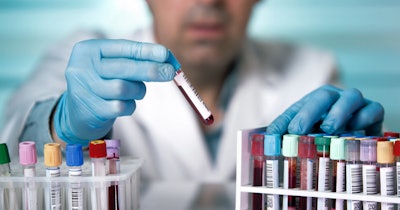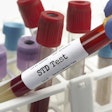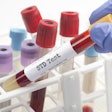
Clinical laboratories could be essential to the response against the rise of drug-resistant forms of the sexually transmitted infection gonorrhea, according to an article in Clinical Laboratory News (CLN), the American Association for Clinical Chemistry’s magazine.
Gonorrhea has developed resistance to nearly all of the antibiotics used against the pathogen. Resistance to ciprofloxacin emerged in the late 1990s; by 2004, the prevalence of drug-resistant strains among men who have sex with men had increased to the extent that the drug was discontinued in that population. Resistance to other drugs shrank the pool of recommended first-line treatments to a single product.
However, while only a single 500-mg dose of ceftriaxone, an injectable cephalosporin, is recommended in first-line settings, patients presenting with an initial gonorrhea infection may be treatable with other medicines. In 2021, half of all infections in the U.S. were estimated to be resistant to at least one antibiotic, but only 0.2% of cases required treatment with four or more antimicrobials. The challenge is to identify which of the available antibiotics are likely to be effective.
“Many of those [with drug-resistant gonorrhea] could use older treatments if we had better diagnostic technology that would detect markers. But we don’t know that, so we automatically go to the next-tier drug,” Barbara Van Der Pol, PhD, professor of medicine and public health at the University of Alabama in Birmingham, told CLN.
The U.S. Centers for Disease Control and Prevention (CDC) has identified laboratory testing as a challenge for the management of gonorrhea. According to the CDC, the “substantial decline” in gonorrhea culture testing by clinicians and the reduced capability of laboratories to perform gonorrhea culture techniques for antibiotic susceptibility testing is a major challenge to monitoring drug resistance.
An in vitro diagnostic test for gonorrhea drug resistance could help. However, the economics of creating and validating a test to support regulatory approval may be unattractive to clinical diagnostic companies.
“If you want to develop a new test, you have to do a clinical study and are not allowed to use isolates out of a freezer,” Van Der Pol said. “How many people do you have to enroll to A, catch gonorrhea; B, catch drug-resistant [strains]; and C, follow them up for clinical outcomes? That’s why we’re stuck.”
The lack of an approved test means clinical laboratories must continue to culture isolates and then either perform antibiotic susceptibility testing in-house or send it to a reference laboratory for analysis.



















